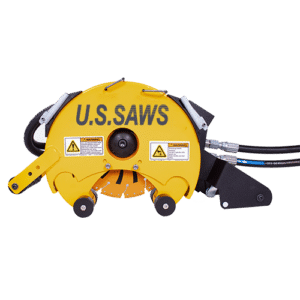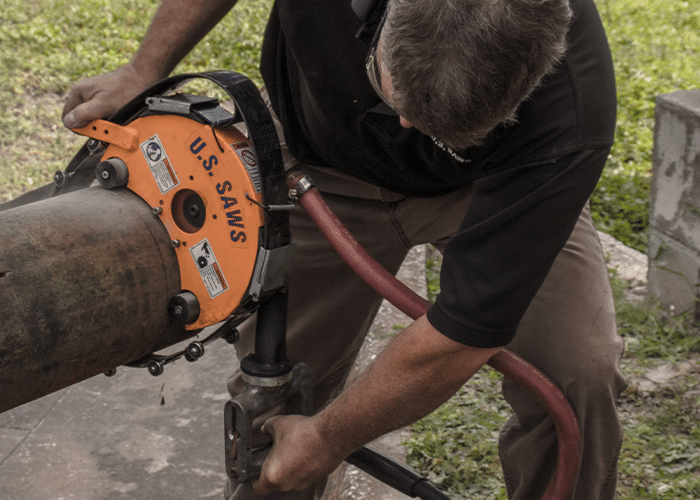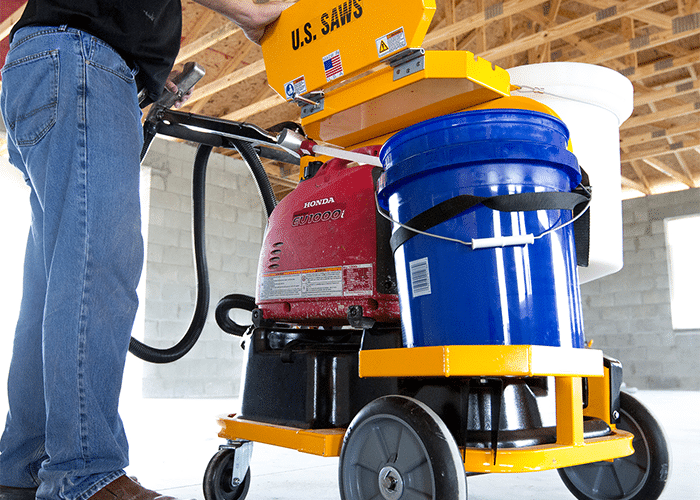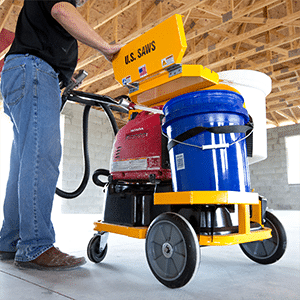Often time contractors find themselves stuck in tight situations where large diameter pipe needs to be cut, but the conditions are not optimal for the use of industry standard pipe cutters or saws. Cutting pipe in cramped conditions can be a real nightmare. Couple that with wet conditions and you could be setting yourself up for disaster. That’s where the U.S.SAWS Belly Saw comes in and makes life a whole lot easier for those wet cuts in narrow spaces.
Applications of a Belly Saw
The belly saws supplied by U.S.SAWS are ideal for pipes ranging from 8 inches to 24 inches, 24 inches to 48 inches, and 48 inches to 72 inches in diameter. Contractors and utility workers use these innovative saws for cutting subgrade pipes in tight conditions as it only requires 7 inches of clearance to work, eliminating the need to clear out excessive amounts of dirt to create the cut, which then saves significant time and effort. If a pipe has burst and needs to be cut and repaired, having to clear out a wide area of sludge under and around the pipe increases the amount material lost from leaking out of the pipe and requires more effort and manpower to clear out, thereby increasing the total cost of the job. The belly saw provides the workers the ability to make the cut quicker by reducing the amount of space needed for saw clearance and under safer conditions.
U.S.SAWS manufactures and sells belly saws that are pneumatically or hydraulically powered. These powerful saws with their Tiger Tooth blades make cutting PVC, HDPE, ductile iron and cast iron pipes a breeze, creating precision cuts every time.
Benefits of a Belly Saw: Increased Safety
Wet and tight are never conditions that meld together to create a safe pipe cutting scenario. U.S.SAWS has solved that problem through their belly saw. U.S.SAWS is always looking for ways to develop tools that protect workers. Their belly saws do not disappoint in this regard. These saws are water saws in that they are ideally used in wet conditions. As safety is paramount in the design of these saws, U.S.SAWS first ensures that the saw is equipped with its top of the line Tiger Tooth saw blade. Sharp blades make lessen cutting time, which then reduces the amount of time spent using the saw. For cutting pipe ranging from 8 to 24 inches, the belly saw comes equipped with an 8 inch blade. Pipes with diameters of 24 to 48 inches and 48 to 72 inches would use a belly saw equipped with a 12 inch Tiger Tooth blade. The next safety feature of the belly saw is its clamshell design. This shell design surrounds the saw and protects the workers from those sharp blades before, during and after the cut. Another safety feature for these saws is how they are powered. By using air or hydraulic power in small, cramped spaces, emissions are non-existent, and workers are not forced to breath in harmful fumes. Finally, the vital safety feature of this water saw is the strap used to affix the saw to the pipe. By strapping the saw to the pipe itself, the saw can be drawn around the pipe for a fast and accurate cut. Further, U.S.SAWS supplies a “water kit” for use with steel pipes to suppress sparks.

Save Time with U.S.SAWS Belly Saws
Not only has U.S.SAWS taken safety into account for the development of their belly saws, they also want to ensure the saw is an efficient tool. The entire purpose of the “tool” is to make a regular job easier. U.S.SAWS understands that time is money, not only for the workers, but also for the municipalities or businesses employing the workers or supplying the materials flowing through the various pipes. The 7 inch clearance space required to cut fully around a large diameter pipe is nothing compared to other tools used for similar jobs. Less prep work means less time and money spent. By requiring such minimal clearance for such a large job, the workers’ time normally spent on clearing space, can be used attaching the saw and focusing on creating an accurate cut. Further, the accuracy provided by using the strap and wheel system requires less effort by the workers during back breaking work, and also enables the workers to make easy accurate cuts, reducing the need to fix a poor cut.
U.S.SAWS is an innovator in the tool industry. In balancing safety and efficiency, U.S.SAWS has developed yet another saw that will revolutionize the world of pipe cutting. Contact U.S.SAWS today to find the right belly saw for your business



